What to Know
- The city added yet a 12th ZIP code to its burgeoning cluster problem; those account for about 30% of citywide cases the last two weeks despite representing less than 9% of the population
- The seven-day rolling average positivity rate for those ZIP codes is up to 5.86%, while that overall metric for the city is 1.53%, a notable increase as of late; statewide, 20 ZIP codes are areas of concern
- New Jersey is combatting some new increases of its own; President Trump, who visited the state this week, has tested positive, along with the first lady, he announced on Twitter early Friday
Gov. Andrew Cuomo threatened to impose fines on local governments over lacking compliance Friday, saying New York's hotspots are a "significant problem" and a product of failed enforcement of COVID safety protocols and regulations.
"The numbers are continuing to go up in many of these ZIP codes," Cuomo said on a telebriefing with reporters shortly after New York City reported its highest daily COVID case average in well over a month. "If local governments don't step up compliance, they can actually be in violation of the law and they can be fined."
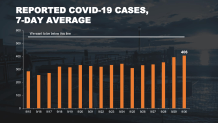
By law, any potential fines could be upwards of $10,000 a day, though certain assessments would have to be made as far as compliance and enforcement steps and whether a local government's actions meet the standard for penalty.
The governor, for the third time in three days, slammed the notion that these communities needed more education and outreach, saying we're beyond that: "Compliance is not public education. People know what the rules are. Local governments have to do enforcement. It's the law. Their job is to enforce the law."
Twenty-one ZIP codes in the state, mostly in Brooklyn and Queens, along with Rockland and Orange counties, now are averaging a 6.4 percent positivity rate, Cuomo said. Take them out and the rest of the state is around 1 percent. He worries the problems are not being effectively managed nor contained.
New York City health officials added yet another ZIP code to the burgeoning cluster situation in Brooklyn and Queens late Friday, bringing its current number of hotspot ZIP codes to 12 and identifying four separate clusters.
The city's health department issued a new commissioner's order empowering agencies to issue shutdown orders to businesses for repeat non-compliance, but no severe restrictions have been implemented in the hotspot areas -- yet.
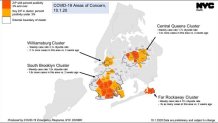
Mayor Bill de Blasio said Friday on WNYC that he didn't want to have to go that route, but said community leaders in those areas are aware it's a possibility "if we don't see a turnaround soon." Asked about the potential the situation could evolve into the need for a large-scale shutdown, de Blasio said he didn't see a scenario where that would happen anytime soon, noting most neighborhoods outside the areas of concern are seeing positivity rates of 1 percent or less.
In the 12 hotspot ZIP codes, new COVID cases are outpacing citywide positivity average 3.4 times over the past two weeks, health officials said. One in Far Rockaway, the Edgemere/Far Rockaway cluster, is seeing a case growth rate 4.17 times the citywide average. Two-thirds of the 12 clusters saw day-over-day growth yet again, based on the city's latest data released Friday.
The latest neighborhood of concern to be added is Fresh Meadows/Hillcrest, with has a positivity rate just over 3 percent.
They now account for about 30 percent of all new cases citywide over the last two weeks despite representing less than 9 percent of the city's population. The seven-day rolling average positivity rate for those ZIP codes is up to 6.43 percent, while that overall metric for the city is 1.53 percent, a notable increase as of late.
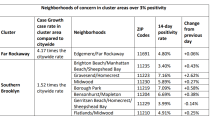
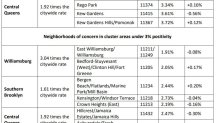
That seven-day average has ticked up each day this week, albeit slightly. On Tuesday, that rate was 1.38 percent. It climbed to 1.46 percent Wednesday, hit 1.59 percent Thursday and dropped a bit, to 1.53 percent, Friday, de Blasio said.
"We'll know a lot more over the next few days. We're hovering around a level right now that's 50 percent of the way to the standard that would cause us greater concern citywide," the mayor told WNYC's Brian Lehrer, referring to the 3 percent citywide threshold that would immediately shutter New York City public schools.
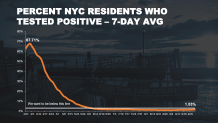
The hotspots are driving a slow uptick in the state's daily infection rate, which hit 1.3 Friday. Prior to the clusters, it had a 38-day stretch below 1 percent, though the seven-day rolling average is still around that number. Hospitalizations are also ticking up statewide, climbing back above 600, a 50 percent jump in recent weeks, Cuomo has said. Sadly, more deaths could follow -- tragedy the hardest-hit state in America can least afford to endure, to any degree.
Daily Percentage of Positive Tests by New York Region
Gov. Andrew Cuomo breaks the state into 10 regions for testing purposes and tracks positivity rates to identify potential hotspots. Here's the latest tracking data by region and for the five boroughs. For the latest county-level results statewide, click here
Source: ny.gov
The clusters outside the city, in Rockland and Orange counties, are seeing significantly higher positivity rates than those in New York City but are testing tens of thousands of fewer people each day, so the sample size is much smaller. There has also been a smaller uptick in Westchester County's New Rochelle, home to the first hotspot on the East Coast back in March and what would become the first "superspreader event" for New York state, Cuomo has said.
Tracking Coronavirus in Tri-State
In New Jersey, there is also growing concern regarding a spike. While it appears to be limited to a single county at this point, Gov. Phil Murphy described the situation in Ocean County Friday as "deeply concerning." He said both the share of cases per 100,000 residents and the positivity rate (15.85 percent) have "far exceeded" the statewide average, which ticked up to 2.47 percent Friday.
"Enough of this irresponsible, reckless words and behavior," Murphy said. "It is time to pin ourselves back down."
More help in the form of testing will be coming to Ocean County and the city of Lakewood in particular, with 6,000 rapid tests and three mobile labs on the way within a week. But the concern is that numbers in Lakewood, with a positivity rate as high as the dozens of quarantine states on New Jersey's advisory list, could lead to stricter measures.
When asked about a possible quarantine for the county, Gov. Murphy said is "beyond real feasibility."
President Donald Trump, who visited New Jersey this week, tested positive for the coronavirus along with the first lady, he announced on Twitter early Friday. Trump’s positive test came just hours after he confirmed late Thursday that senior aide Hope Hicks had been diagnosed with the virus. The White House said Friday it was aware of his exposure to Hicks before the trip to the Garden State.



